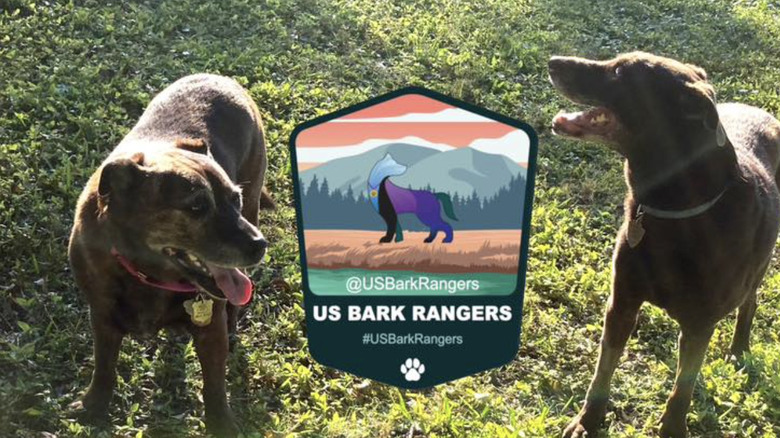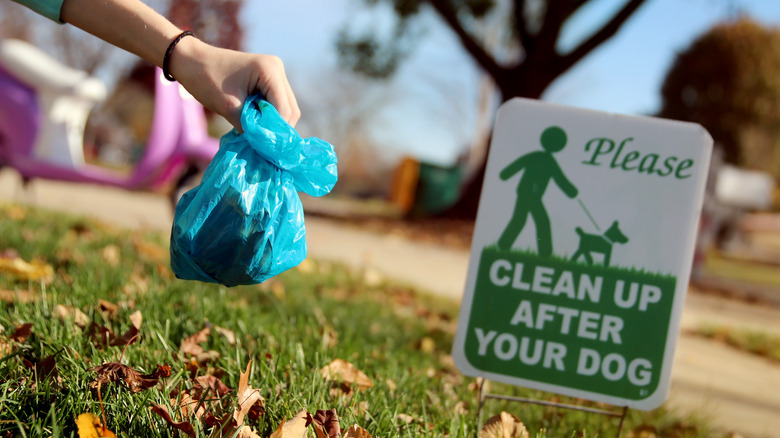What It Means When A National Park Ranger Mentions A 'B.A.R.K. Ranger'
Summer has arrived, and with it, the call of the wild draws millions to America's over 400 national parks. In 2024, these treasured landscapes welcomed a record-breaking 331.8 million visitors, a testament to their everlasting appeal. For many, these adventures are incomplete without their four-legged furry companions. Dogs, with their often boundless enthusiasm, are eager to join the journey, trotting alongside their owners through natural escapes in forests, sand dunes, or along historic trails.
Yet, pets can pose challenges to the delicate balance of these protected areas. Unrestrained dogs may chase wildlife, their waste can introduce harmful bacteria, and their scent can disrupt animal behaviors. Even their enthusiastic barks can fracture the wilderness's quiet, and some visitors, particularly children, are uneasy around unfamiliar dogs.
To address these issues while celebrating the joy of traveling with pets, the National Park Service launched the B.A.R.K. Ranger program. First piloted in 2015 at Olympic National Park and officially rolled out in 2016, this initiative promotes responsible pet ownership to protect park ecosystems and enhance visitor experiences. B.A.R.K. stands for Bag your pet's waste, Always leash your pet, Respect wildlife, and Know where you can go. It's a pledge for dog owners to act as stewards to the land, ensuring their pets tread lightly. Being a B.A.R.K. Ranger means enjoying the national parks with your dog while setting an example for others, preserving these spaces for future generations with a touch of tail-wagging fun.
How the program works and who can get involved
The B.A.R.K. Ranger program is designed to be accessible, engaging, and tailored to each park's unique environment. Any dog owner visiting a participating national park can join, provided they commit to the program's principles. Some parks, like Acadia National Park, offer structured activities like ranger-led walks where owners and pets learn the B.A.R.K. rules together. Others provide activity booklets at visitor centers, which take 10-30 minutes to complete with your furry friend. These booklets guide owners through tasks that reinforce responsible behaviors such as proper waste disposal and leash etiquette. Upon completion, dogs earn a B.A.R.K. Ranger dog tag, often engraved with the park's emblem, or other rewards like special park bandanas. Some parks, like Prince William Forest Park, offer tags for free, while others sell them at bookstores or visitor centers.
Engagement extends beyond the trails and many parks encourage owners to share their B.A.R.K. Ranger experiences on social media using hashtags like #USBarkRangers or #BarkRangerNPS. Fort Vancouver National Historic Site hosts events like B.A.R.K. Ranger Day, celebrating the bond between humans and dogs that has spanned centuries.
The National Park Service has a list of participating parks, including Zion, Petrified Forest, Yosemite, and Acadia National Park, with each offering unique twists. If your favorite park doesn't offer the program, you can still follow B.A.R.K. principles and contact the visitor center to express interest through public inquiry. The pledge is simple but meaningful: owners promise to lead by example, keeping their dogs leashed, respect wildlife, and explore only pet-permitted areas, fostering a culture of mindfulness.
Why it matters: conservation, safety, community
The B.A.R.K. Ranger program is more than a fun activity, it's a vital tool for conservation, safety, and community building. National parks protect fragile ecosystems, and pets can unintentionally disrupt them. Dog waste, if left behind, introduces bacteria that can harm soil and water. Off-leash dogs can wreak havoc off trails, and may chase or stress local wildlife, potentially altering their behavior. The wildlife isn't used to seeing domesticated animals in their habitat.
For instance, a dog's scent can mimic a predator's, causing animals to avoid feeding in certain areas. The program aligns with Leave No Trace Principles, urging owners to pack out waste, stick to trials, and avoid disturbing plants or animals. By adhering to these guidelines, B.A.R.K. Rangers help preserve biodiversity end ensure parks remain pristine for all.
Safety is equally critical. Unrestrained dogs can create hazards, from tripping risks caused by dug holes to confrontations with wildlife that endanger both pet and owner. Leashing dogs, with a six-foot-leash or shorter, protects them from predators and prevents conflicts with other visitors, including those wary of dogs. The program also fosters community by encouraging respect for shared spaces. When owners bag waste and control their pets, they create a welcoming environment for everyone. A highlight of the program is it turns pet owners into park ambassadors, inspiring others to follow suit. By joining the B.A.R.K. Rangers you and your dog become part of a movement to protect America's natural treasures, ensuring opportunities for you two to experience those otherworldly National Park views together.


